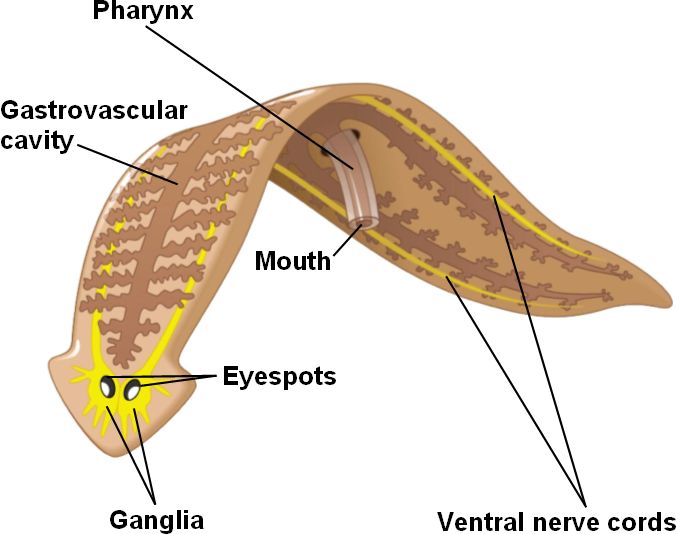Phylum Platyhelminthes (Flatworms)
Class Trematoda Ex: Flukes
Class Cestoda Ex: Tapeworm
Class Turbellaria Ex:Dugesia
Class Monogenea Ex: Polystoma
Phylum Nemertea (Ribbon Worm)
Phylum Nematoda (Round Worm)
Phylum Rotifera (Rotifers)
General Body Plan
General Anatomy
Anatomy of Dugesia or Planaria |
| Source: http://shsapbiop3-taxa.wikispaces.com/animalia-platyhelminthes |
Anatomy of Rotifer
 |
| Source http://www.emc.maricopa.edu/faculty/farabee/biobk/biobookdiversity_7.html |
Life Cycles of Parasitic Worms
Class Trematoda Clonorchis sinesis (Liver Fluke)
Shelled Embryo-->Miracidium-->SNAIL-->sporpcyst-->redia--> cercaria-->metacecaria in FISH's muscles --> HUMAN's liver
 |
| Source: http://bio390parasitology.blogspot.com/2012/02/immigrants-from-afar-clonorchis.html |
Shelled Embryo-->Miracidium -->SNAIL-->sporocyst-->cercaria--> HUMAN's liver
 |
| Source: http://www.cab.unimelb.edu.au/cab_schisto.htm |
Taeniarhynchus saginatus (Beef's Tapeworm)
Shelled Embryo (in proglottid)--> consumed by cattle-->onchospheres in blood-->cysticercus (bladder worm) in beef muscle --> HUMAN's intestine
 |
| Source: http://www.esu.edu/~milewski/intro_biol_two/lab__10_platy_nemat/taenia_scolex.html |
Ascaris lubricoides (Intestine roundworm)
Shelled Embryo (in feces)--> Shelled larvae develop on soil--> shelled larvae ingested by humans with food or water--> larvae emerge in duodenum then enter blood stream--> in lung, move to trachea, esophagus--> HUMAN's intestine.
 |
| Source: http://bca.org/gallery/bioimages2010.html |
Shelled Embryo (in feces)--> Larvae developed in soil--> Larvae grow-->larvae attach, penetrate skin, enter blood stream--> in lung,enter alveoli-->bronchi-->esophagus--> HUMAN's intestine.
 |
| Source: http://www.dpd.cdc.gov/dpdx/HTML/ImageLibrary/G-L/Hookworm/body_Hookworm_il2.htm |
Enterobius vermicularis (Pinworm)
In Human's intestine and cecum-> females migrate to anus at night--> deposited shelled embryos causes itching-->fingernails and clothing pick up shelled embryos--> reinfection of self. food, water, air, dust--> hatch in duodenum.
 |
| Source: http://dailyparasite.blogspot.com/2010/06/june-10-syphacia-obvelata.html |


No comments:
Post a Comment